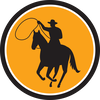|
In this post, I’d like to focus our attention on the theory side of things. In particular, a topic whose importance in the eLearning arena was really brought to my attention by a colleague of mine who's helped open my eyes to countless considerations that differ from my background as a traditional secondary educator.
However, one topic that my colleague has helped me to better understand is that of cognitive load. There has been a great deal of research done on the topic, but in a nutshell, it refers to the amount of information the human brain can effectively process at one time. And while I knew of it prior to meeting him, I lacked understanding its impact in the eLearning environment. Since Jim’s and my first discussion about cognitive load, I’ve challenged myself to dive into learning more about it, specifically, proactively targeting a learner’s cognitive load while developing eLearning content. So let’s get started. There are a variety of terms used with regards to cognitive load theory, but I keep finding myself visualizing it in my mind as a car’s tachometer. Sure, it’s a metaphor, but conceptually, it aids in the understanding of how/when/why, and to what extent my mind changes gears. Let’s look at some of my terms:
That leaves us with cognitive up-shift. However, don’t think of this simply as time spent actively learning, but rather, expanding the definition of up-shift to include other stimuli that vie for a learner’s attention, thus adding to his or her cognitive load. Other stimuli, you ask? That’s right. Things like:
To name a few. Okay so that was more than a few. But really, our cognitive load takes on stimuli from three primary categories – at least while in a work setting, and taking an eLearning course:
That said, I’d like to focus on something that, while I’m certain others have thought about, I didn’t really find anything related to intentionally lessening the cognitive load, or, as I refer to it, down-shifting. A cognitive down-shift allows learners time to ease up on the gas a bit so they don’t redline, but not too much, so they don’t stall either. Essentially, to keep your learner’s brain working effectively and efficiently through a series of up-shifts and down-shifts. So the question remains…how does one accomplish this? There are a variety of methods to incorporate down-shifts (humor, interactivity, etc.), but I really want to point out the importance for developers to be aware of this while developing, by using and relying on Captivate’s timeline. Let it become your development tachometer – how much are you asking learner’s to learn, speedometer – how fast are you asking them to learn it, and odometer – for how long are you asking them to learn. Until next time, shoot for the stars and BE the YOND!
0 Comments
I’ve been an active participant in a popular Captivate 9 forum for nearly a year. While initially perusing the Community, however, I noticed, as with anything really, a variety of users had also chosen to participate - from beginner to the uber-advanced.
So, the purpose of this blog will be to focus on the myriad of features found within Captivate, and extending to topics revolving around all things instructional design. By reading ahead, I take it that you are intrigued if nothing else. I hope to exceed your expectations. A Bit About Me – My name is Adam Beardslee, and I have been designing and developing content for about five years. However, I’ve been using Captivate 9 for last year or so. My background is in Secondary Education, and I’m a Corporate Trainer/Instructional Designer/Developer. In a nutshell, there’s a good chance that I’m a version of, well, you! A Bit About this Blog – Each blog will focus (for the most part) on one feature of the system or one topic related to theory. At the end of each blog I’ll post a comment to address any questions readers may have, or quite possibly, pose a challenge for followers to attempt, and reply with their comments. A Bit About You
In any case, I’m happy you’re here, and I look forward to sharing my thoughts, and tips and tricks with you. Until next time, shoot for the stars, and BE the YOND! |

 RSS Feed
RSS Feed
